It’s baby cockroach time! I don’t breed my hissing cockroaches, so sometimes it’s time for some new ones. I ordered two and got an extra free. All of my cockroaches have come from Virginia Cheeseman. They’re always well-packaged and healthy, and I like being able to choose the general age (a lot of places only sell mixed tubs, which isn’t suitable for non-breeding pets). I also bought some woodlice this time, but that’s a tale for later.
The first nymph has a slight kink in their antennae, but this shouldn’t cause them any issues. They’ll also get new ones when they moult.
They’re one of those rarer few who like water enough to wade in it. Most of the cockroaches avoid going in the water at all, but I have had a small number before who will go in on purpose. They’ll only do that when it’s shallow enough that they can hold their abdomen over the water. This can also be filed under why I don’t worry about having open water bowls, because hissers are smart about water. I do use stepped reptile bowls, so they can easily climb in and out.
Image Caption: A top view of a hissing cockroach nymph in a clear plastic tank. They’re brown with some white at the edges of the abdomen segments. One antenna has a noticeable kink in it.
The second nymph has been pretty average in behaviour and looks so far. They’ve spent most of their time in their egg box.
Image Caption: A hissing cockroach nymph on a yellow cardboard egg box. They look very similar to the previous nymph, but have more white on the top of their legs and straight antennae.
And the third escaped. I always open packages over an empty tank, so that any escapees will just end up in the tank. This one had other plans. They jumped from the pot to my arm, then jumped to the tank wall, then went over the top. This is like being the jumping spider of cockroaches. Most just try to crawl out, rather than setting up a multi-point jump to get out. They’re not good jumpers, as they tend to make a rush for it and hope the momentum carries them, but it was enough to get out in this case.
Image Caption: A view inside a set of drawers, with the drawers removed. A plastic tank, egg box, and kitchen roll, have been placed on the floor in the space. An envelope leans up against the wooden board at the back of the space, making it harder for a cockroach to climb out that way. A green arrow points to the corner of the space, where a cockroach nymph is hiding.
Before I could grab them, they climbed under the shelves under my bed. Fortunately, there’s a backing bit to the shelves, so they stopped at that point. I managed to coax them onto some kitchen roll and then got them in a tank.
Image Caption: The escapee cockroach nymph in a plastic tank. They look much like their companions, apart from a layer of dust from running around under the drawers. The edge of an egg box is in view. Through the tank sides, two other plastic tanks can be seen.
Excitement aside, all the nymphs are doing well. They’ve all been drinking water directly, which isn’t a surprise given the heat. I noted before that I have a lot of nymph pictures, but not as many of adults, so I will try to be better about photographing them when they’re older. They’ll most likely be a solid dark brown, as the white markings don’t last to adulthood.
I haven’t named them yet. Suggestions are welcome!
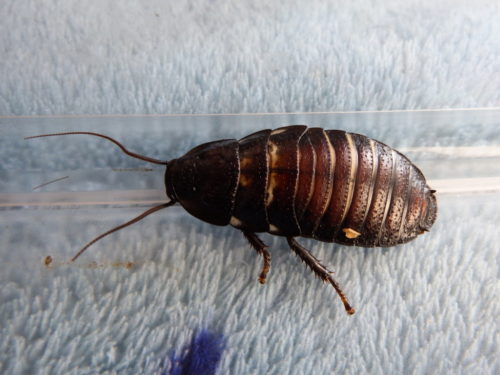

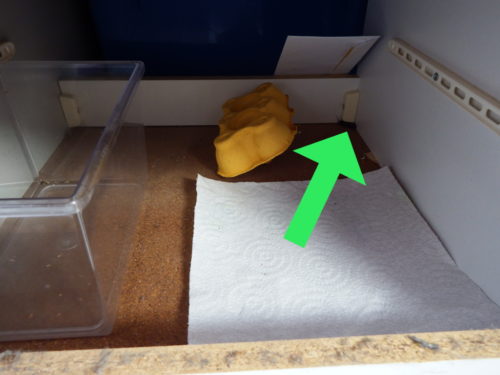
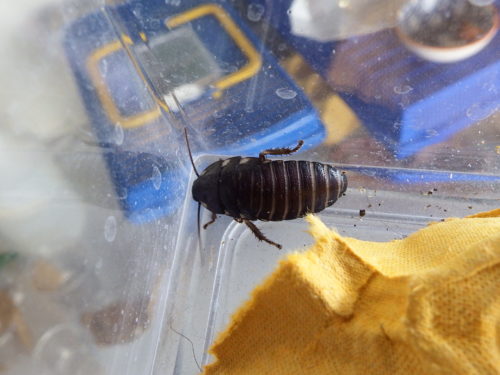
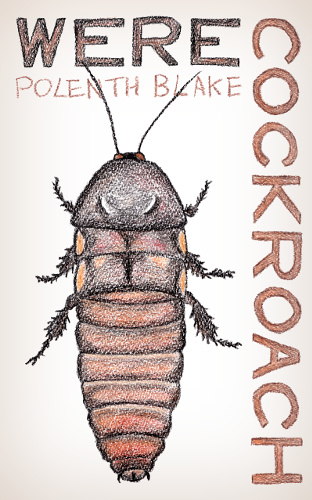
 Series: The Steamborn Series, #1
Series: The Steamborn Series, #1
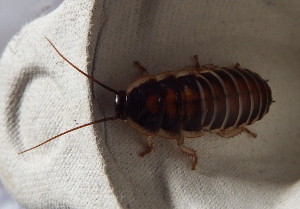 A common question raised by my bio is, “Do you really keep cockroaches?” As though it might be a quirky thing I invented just for the bio. Yes, I really keep cockroaches. I started with one cockroach (Sparkle), then got two (
A common question raised by my bio is, “Do you really keep cockroaches?” As though it might be a quirky thing I invented just for the bio. Yes, I really keep cockroaches. I started with one cockroach (Sparkle), then got two (

